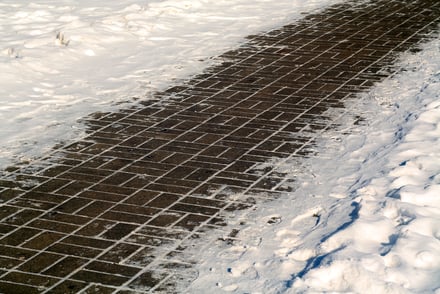Every owner of an old brick home knows that exterior window sills will show age and weathering, both of which significantly impact a building’s good looks over time. Even more critical than appearance is how window openings will either give way to or hold tight against water and wind penetration.
Freeze and thaw cycles as well as seasons of heavy rain, such as those in the Washington, DC area; all take their toll on a building’s facade. The care and maintenance of masonry surrounding windows and doors is an essential responsibility for owners of historic brick homes.
The benefits of repairing or replacing window sills, regardless of material, include reduced heat loss, greater aesthetic appeal, little to no water penetration, and improved structural integrity for both the windows and their walls.
At Renaissance Development, we recommend brick or concrete to stay consistent with the home’s original design. Below we’ve outlined some of the pros and cons of each of those.
Restoring Brick Sills
As a first step, our expert masons remove the mortar surrounding the damaged bricks and then remove the actual sill bricks. The ones that are in good shape will be cleaned and put back. If they aren’t salvageable, we’ll find new bricks that match the home’s aesthetic.
In some cases, it may be hard to find suitably matching bricks. For example, if the original brickmaker or supplier is no longer around, it may be challenging to locate bricks of an unusual color tone (brown, gray, black). Another challenge we see with brick sills on some buildings is excessive moisture penetration in the mortar joints, which leads to more rapid deterioration. Since the joints face up along the sill, they are more exposed to the elements. Unless they can also dry out completely, it may make more sense to replace brick sills with concrete in persistently damp areas.
Concrete As an Authentic Historic Material
Concrete first showed up in the building trades in the 1860s, so many brick homes in historic neighborhoods still have their original concrete sills. Among those originals, some are undoubtedly showing their age.
A benefit of concrete is that it can be dyed, tinted, or painted to match existing sills or other facade parts. The finished look of new or repaired concrete can be seamless and, therefore, quite aesthetically pleasing.
Repair vs. Replacement
As with any masonry exposed to the weather, concrete sills can crack, flake, spall, or be subject to water damage. Sometimes a small patch job will be enough to fix a damaged or aging concrete sill, though we often find it better to pour a new one. Opting for a new window sill is a smart way to prevent more significant problems down the line. Water can infiltrate a patch more quickly than an entire sill. Given fluctuations in temperature and moisture throughout the year, sill replacement will provide a longer-lasting solution than simple patching.
Spot treatments - whatever the exterior masonry issue - are, at best, short-term solutions often leading to even more work in just a few years. Our expert site evaluators will assess your situation, talk it over with you, and offer a professional opinion on your best options.
The masonry and restoration specialists at Renaissance Development are here to help you make the right decisions and guide you through the process. Contact us today for more information or to make an appointment.
Sep 10, 2020 7:15:00 PM


